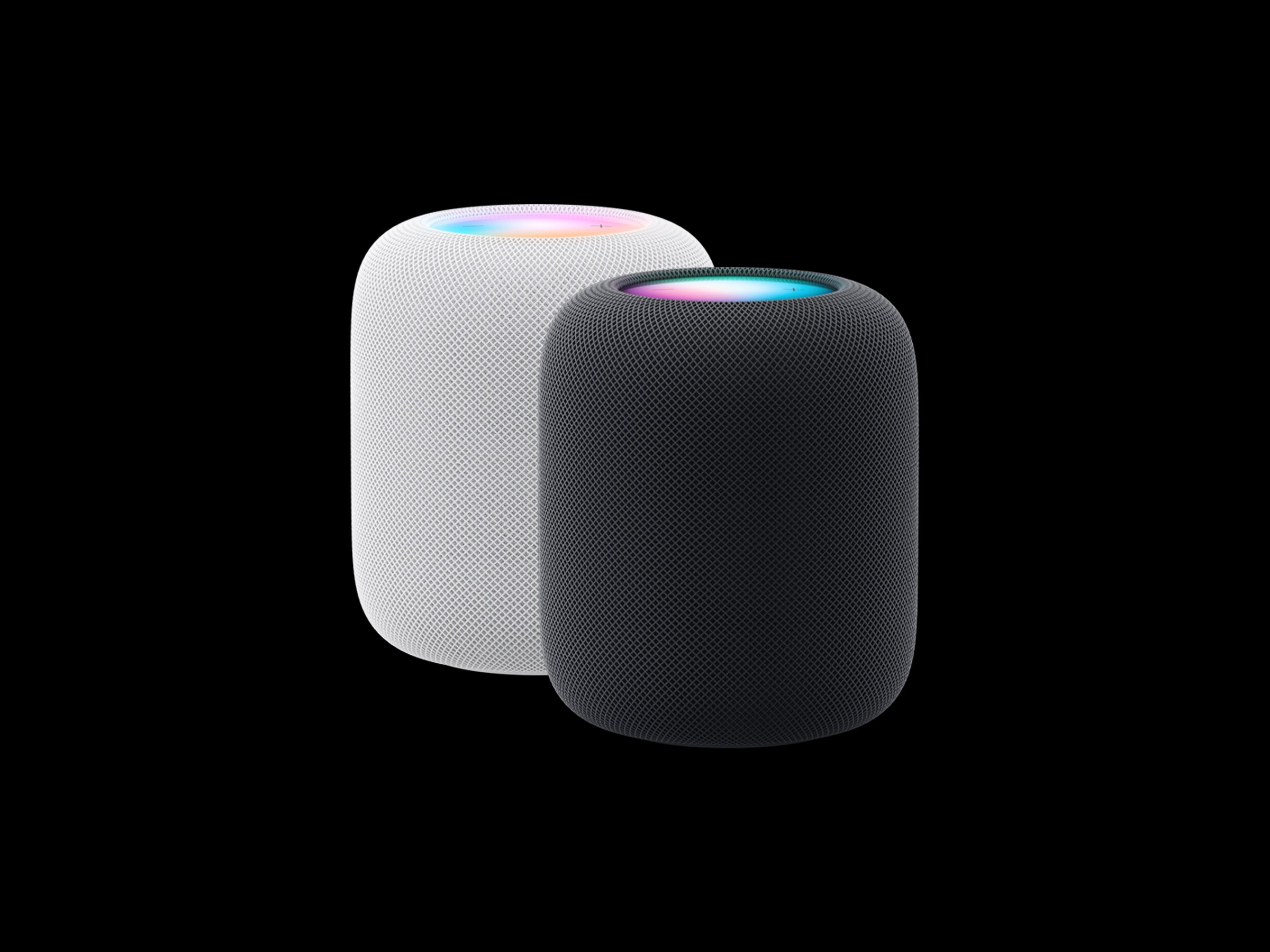Apple cares a lot about music. Steve Jobs loved it so much that he invented the iPod and iTunes to let us bring all of it everywhere, and personally owned multi-thousand-dollar Finnish speakers in his sparsely-decorated living room. To this day, Apple Music is one of the best-sounding streaming services you can subscribe to thanks to lossless audio support. The headphones it makes, both itself and via Beats, are largely fantastic.
It’s a shame, then, that the company still fails to make a great full-size smart speaker. Not only is the recently revamped HomePod a near-perfect visual reproduction of the discontinued model from 2018, but it barely has any audio improvements. The new HomePod has less drivers for audio, remains incompatible with Spotify and other popular services, and still can’t communicate with anything but Apple devices when your friends are over. The full-color screen on the top is larger, but it fails to convey more information than an Amazon Echo’s blue stripe.
In 2018, foibles like these were mildly acceptable as long as the voice assistant worked and the speaker could fill your room with sound. But given that so many excellent competitors now exist in so many different shapes and sizes, it’s hard to let the HomePod slide. The smaller HomePod Mini already accomplishes the same Siri voice control (if you prefer that to Google Assistant or Amazon Alexa, which are objectively better), and offers more than enough sound quality for folks who just want to put some music on.
Unless you spend $600 for two HomePods to listen in stereo, the sound quality isn’t that great, with a heavy helping of bass and not much definition in the mid-range. You can get the same “I have music playing” feeling from the smaller model, or from any number of competitors, for less. If you want high-end sound, you won’t find it here.
Physically, the new HomePod is slightly more squat than the older model, a fat little marshmallow of sound that’s about 7 inches high. Otherwise, the main difference you’ll notice is the larger screen on top, with integrated volume up and down buttons. Say “Hey Siri,” and Apple’s voice assistant wakes up, with a splash of colorful plasma showing up on the top screen to let you know she’s listening.
One difference that many who remember the old model will welcome is a removable power cable, which allows buyers to snake it through the sometimes-small holes in furniture. The last one lacked this and pissed off many people with custom furniture.
Like the previous model, the new one comes in two colors: White and Midnight, which is a slightly darker black than last. Some early reports have indicated that the white model, like the last one, stains wood with rings when left on wooden surfaces. I haven’t had that issue, but I would still get a black one; Apple’s white fabric tends to become stained over the years with dust and wear and tear.
Like the last model, setup is a breeze. Hold a late-model iPhone (with the latest software) up to the thing and the HomePod instantly recognizes it and sets it up. You tell it what room it’s in and you’re off to the races, so long as your phone is already logged in to Apple Music. You won’t get Spotify, YouTube Music, Tidal, or Amazon Music compatibility here, but the HomePod does support Pandora, Deezer, TuneIn Radio, iHeartRadio, and others. You can use AirPlay to play unsupported services on the speaker, but it’s a pretty annoying workaround and requires that guests have iPhones.

